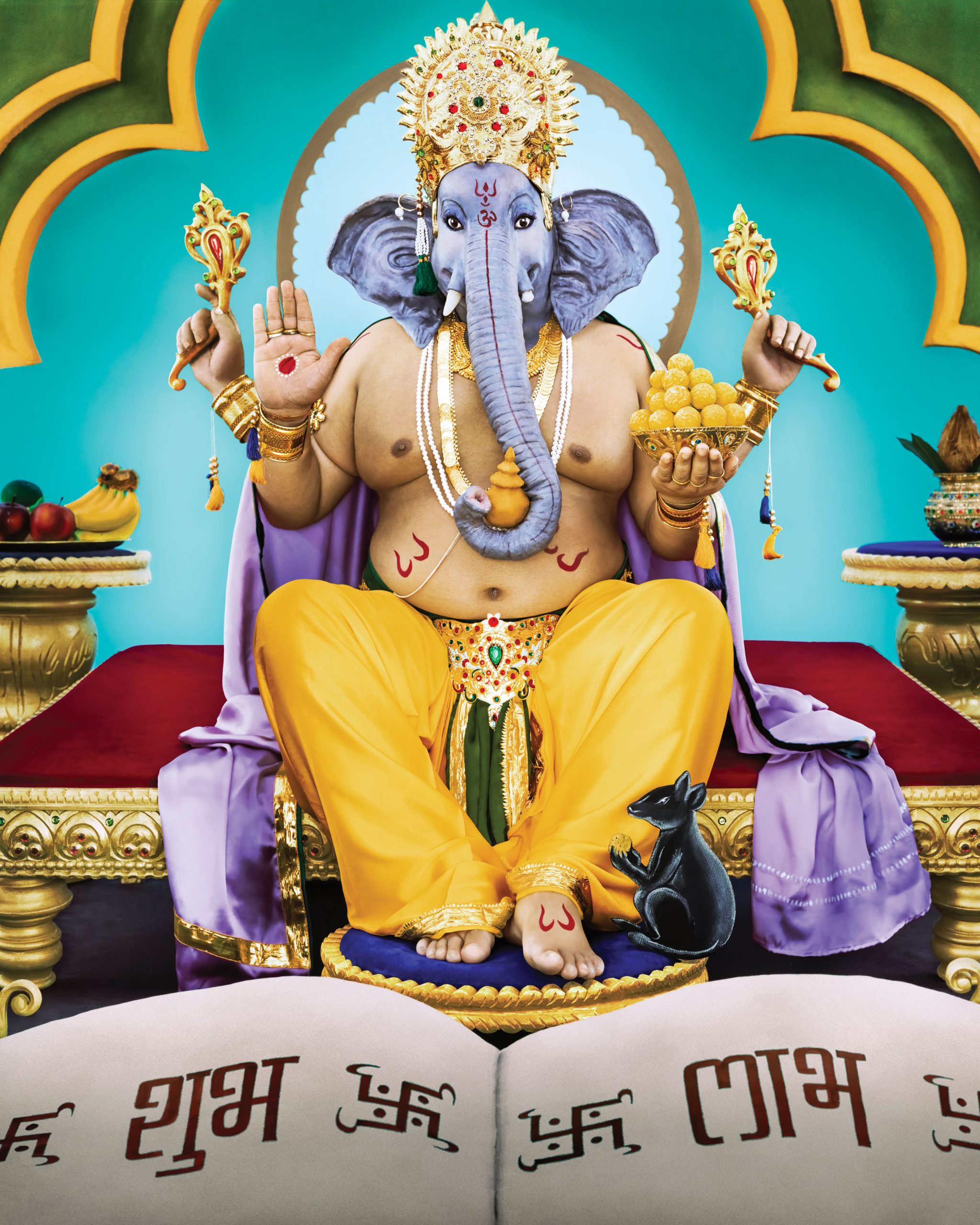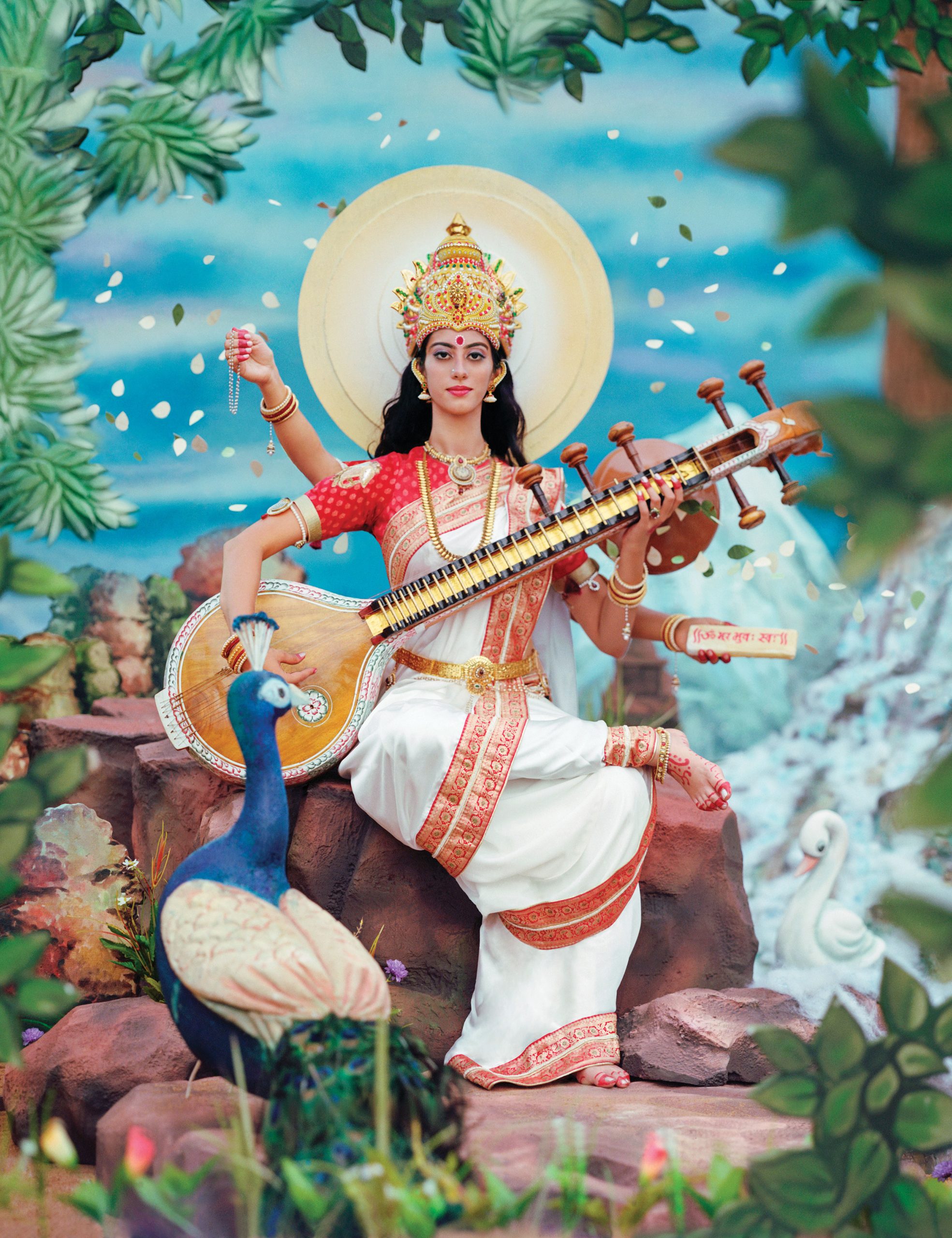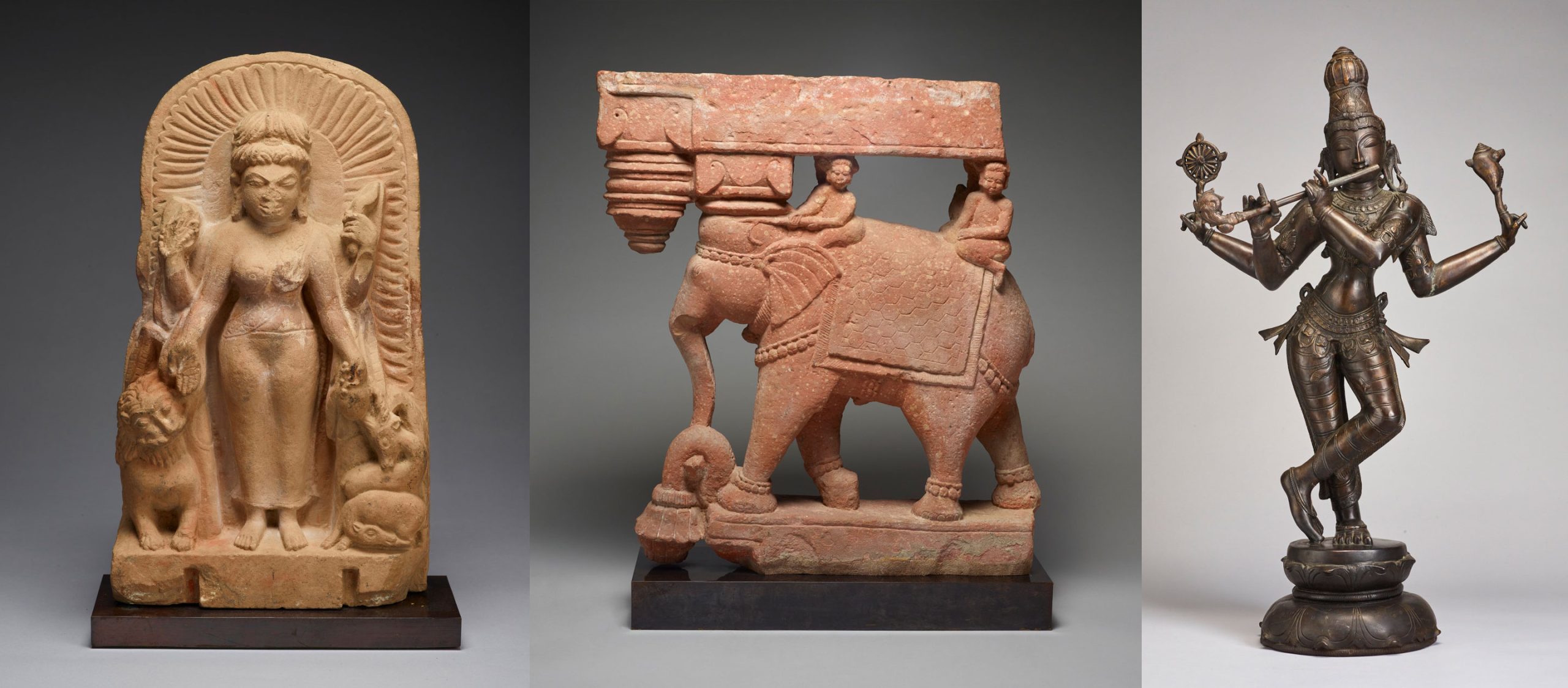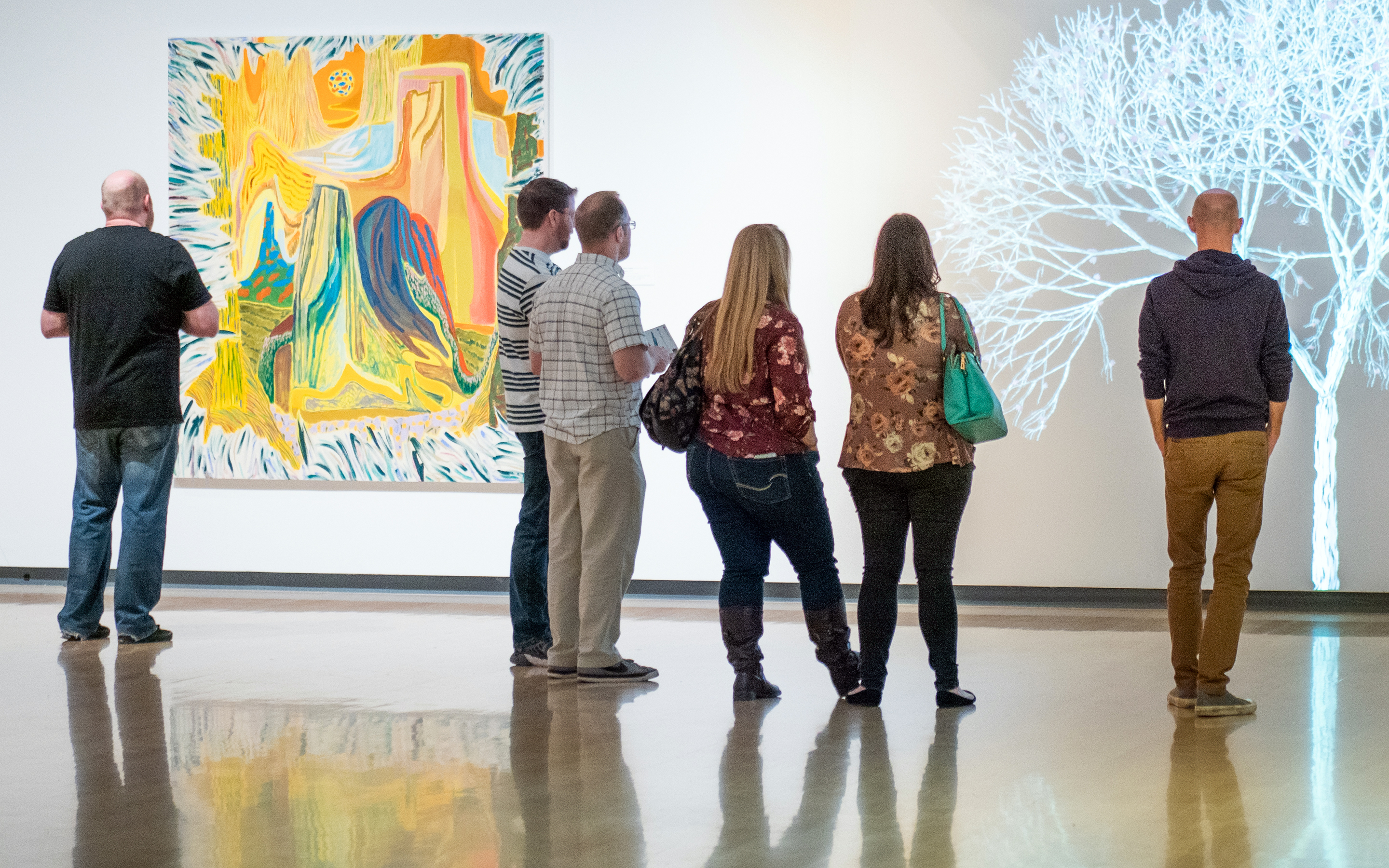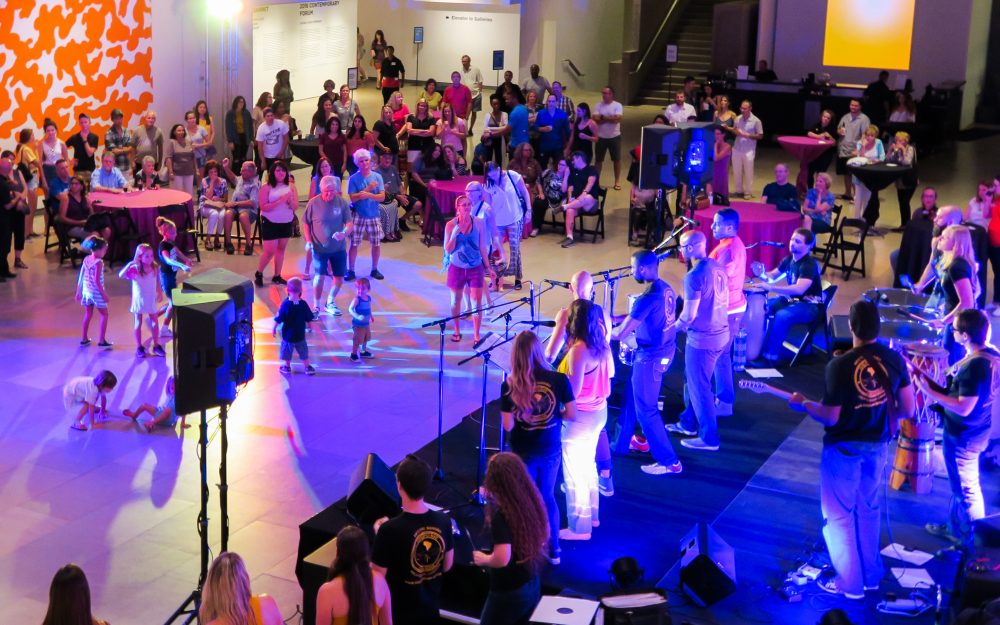La serie Darshan de Sharma comenzó como un proyecto de financiamiento colectivo de varios años a través de la plataforma en línea Kickstarter y tenía como objetivo volver a imaginar fotográficamente la experiencia de encontrarse con deidades hindúes en los espacios del templo. El proyecto, el cual requirió la organización transcontinental de un gran equipo de modelos y artesanos, fue ampliamente aclamamado por los críticos. Cada escena fotográfica de la serie fue creada sin manipulación digital.
En Expandiendo el darshan, los intrincados retratos fotográficos de Sharma de su serie Darshan se combinan con objetos escultóricos históricos de la colección del Birmingham Museum of Art, muchos de los cuales son exhibidas al público por primera vez. Al unir estas obras de los siglos VII al XX con las imágenes contemporáneas de Sharma, la exposición crea un diálogo sobre la relación larga e inextricable entre el arte y la religión, al mismo tiempo que presenta a los espectadores nueve de las deidades más importantes del panteón hindú y el concepto del darshan—ver y ser visto por lo divino.

